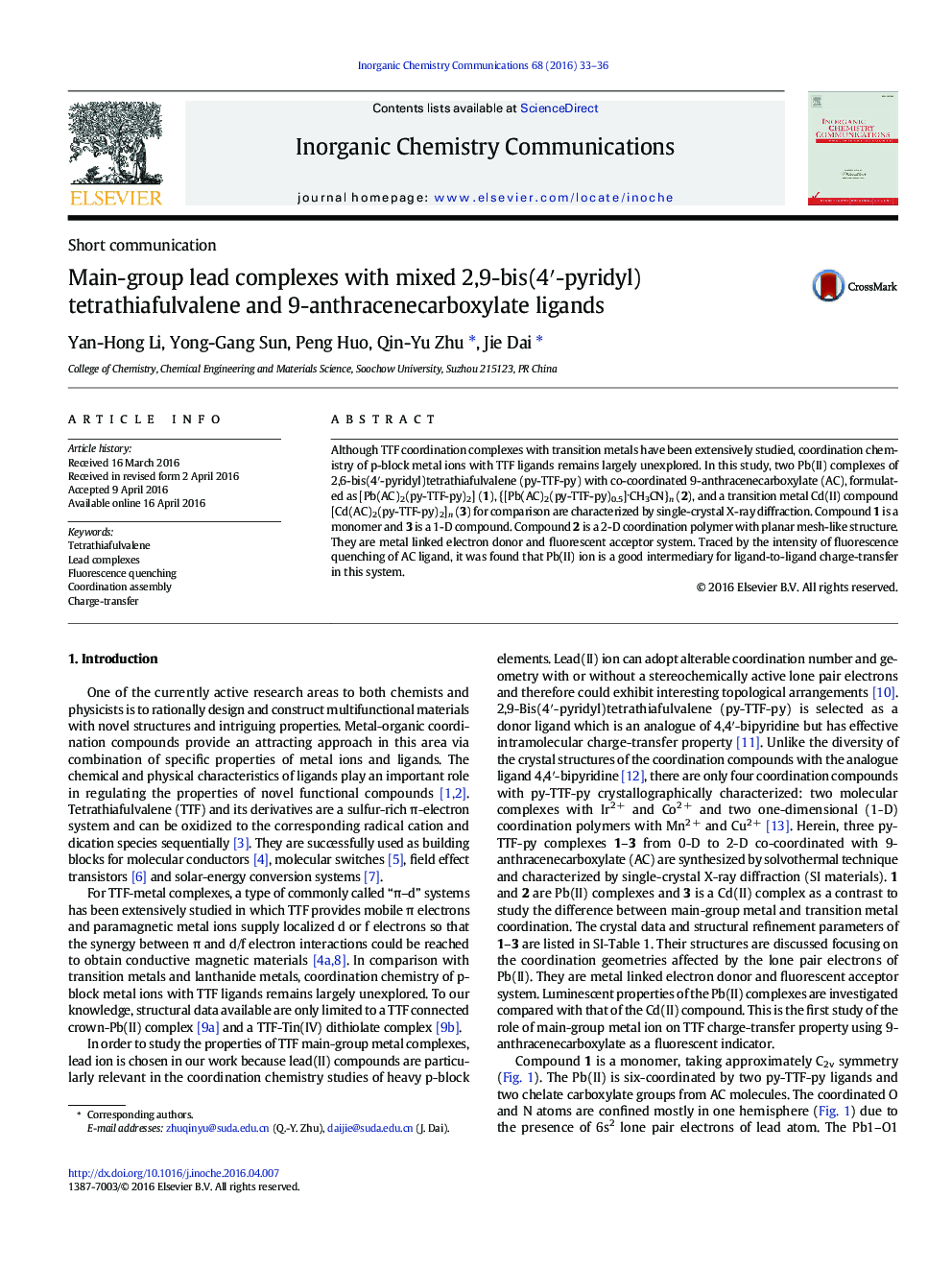| Article ID | Journal | Published Year | Pages | File Type |
|---|---|---|---|---|
| 1305257 | Inorganic Chemistry Communications | 2016 | 4 Pages |
•Main group metal Pb(II) complexes with tetrathiafulvalene ligands are explored.•Fluorescence quenching relates to ligand-to-ligand charge-transfer (LLCT).•Pb(II) ion is a good intermediary for LLCT in comparison with Cd(II) ion in this system.
Although TTF coordination complexes with transition metals have been extensively studied, coordination chemistry of p-block metal ions with TTF ligands remains largely unexplored. In this study, two Pb(II) complexes of 2,6-bis(4′-pyridyl)tetrathiafulvalene (py-TTF-py) with co-coordinated 9-anthracenecarboxylate (AC), formulated as [Pb(AC)2(py-TTF-py)2] (1), {[Pb(AC)2(py-TTF-py)0.5]·CH3CN}n (2), and a transition metal Cd(II) compound [Cd(AC)2(py-TTF-py)2]n (3) for comparison are characterized by single-crystal X-ray diffraction. Compound 1 is a monomer and 3 is a 1-D compound. Compound 2 is a 2-D coordination polymer with planar mesh-like structure. They are metal linked electron donor and fluorescent acceptor system. Traced by the intensity of fluorescence quenching of AC ligand, it was found that Pb(II) ion is a good intermediary for ligand-to-ligand charge-transfer in this system.
Graphical abstractTwo Pb(II) complexes with py-TTF-py ligand are solvothermal synthesized to study the properties of TTF main-group metal complexes. It was found that Pb(II) ion is a good intermediary for ligand-to-ligand charge-transfer.Figure optionsDownload full-size imageDownload as PowerPoint slide
